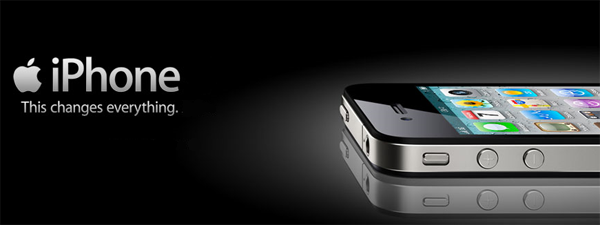In 2015, iPhone generated 92% of the profits made by mobile-phone manufacturers in the world (Alstyne, Parker & Choudary, 2016). Since 2007, the year that Apple’s iPhone came out, the company has been able to dominate the industry. At that time, other mobile-phone manufacturers, like Nokia, Samsung and LG, did have strategic advantages, customer loyalty and economies of scale (Alstyne, Parker & Choudary, 2016). So what enabled Apple to gain such a vast amount of market share?
According to Rogowsky (A decade of iPhone, 2017) Apple did something critical. They were able to disrupt the market by differentiating their product by creating a small computer. Since components got massively cheaper, specs of the iPhone became better and better. And even now, with every iPhone update, new and innovative technologies are implemented, usually not used before by Apple’s competitors (A decade of iPhone, 2017). Through differentiation, making the product unique and attractive to consumers, Apple has generated brand loyalty which enables them to ask a premium price for their product (Nielson, 2014).
Another way that Apple was able to gain market share when they brought the iPhone to the market was the way that they leveraged the power of platforms. Instead of a pipeline business model, Apple made use of the platform strategy. It saw the iPhone as a way to connect participants in two-sided markets in order to serve both ends of the spectrum. With more participants on each side of the platform, the value grows. The App Store is a prime example, since developers want to develop their apps for the iPhone because of the large amount of users and iPhone users appreciate the large amount of different apps that the App Store offers (Alstyne, Parker & Choudary, 2016).
By understanding the value of the network effect in their platform strategy and keeping their products differentiated and innovative, Apple has been able to keep their market share above 80% of all industry’s smartphone profits in the last three years (Jones, 2017). But these are just two factors that could have played a role. What other factors do you think have helped create Apple’s success?
References:
Nielson, S. (2014). Apple’s premium pricing strategy and product differentiation. Market Realist. Retrieved from: http://marketrealist.com/2014/02/apples-premium-pricing-strategy-product-differentiation/
Jones, C. (2017). How Important Is Apple’s iPhone Market Share? Forbes. Retrieved from: https://www.forbes.com/sites/chuckjones/2017/05/29/how-important-is-apples-iphone-market-share/#2448c7719ca4
Rogowsky, M. (2017). A decade of iPhone: The Smartphone Disrupted Everything But Still Has Work To Do. Retrieved from: https://www.forbes.com/sites/markrogowsky/2017/01/09/iphone-at-10-the-smartphone-disrupted-everything-but-still-some-has-jobs-to-be-done/#5541d863ed59
Van Alstyne, M. W., Parker, G. G., & Choudary, S. P. (2016). Pipelines, platforms, and the new rules of strategy. Harvard Business Review 94(4) 54-62


Interesting post, Urscha! Apple is definitely dominating the smartphone market at the moment.
An interesting fact is that Nokia was actually the first one to develop a smartphone with touchscreen and internet access in 1996 (!!) (Surowiecki, 2013). That is 11 years before the first iPhone was introduced! I find this astonishing, as they did have the potential to disrupt the mobile phone market, but somewhere it went wrong and Apple crushed them consequently. Surowiecki (2013) wrote an interesting article for The New Yorker, saying that Nokia made several mistakes, including overestimating their superiority at the time and focusing more on hardware than on software. I agree with the latter in particular. The smartphones Nokia did introduce looked nice – in my opinion. For example, when they came out with the N9, it had a smooth design and even had guerilla glass, preventing the screen from getting scratched. The hardware was sophisticated, but as Surowiecki (2013) mentions, they really were lacking on software development. I have been using iPhones for about 5 years now, so I do not know how the Android software changed lately, but I switched to iOS because it was so much more convenient for me. Noka – in my opinion – even more complicated matters. They used Windows software on their phones and everything looked so hard to navigate, whereas Apple made it their software so user-friendly. I think that this was definitely another factor Apple gained so much market share. It doesn’t matter if you get a new iPhone, the software will be nearly identical (maybe you get a new update and you will see minor changes), so consumers get used to new iPhones relatively quickly. Nokia, on the other hand, has introduced some smartphones with Android software, and some with Windows software, maybe making it hard for consumers to become loyal customers, as they change so much.
I also think Apple has a much better marketing strategy than any other smartphone company. Everybody still probably remembers when Steve Jobs introduced the MacBook Air by taking it out of an envelope. People still talk about it today. Also, Apple created whole communities and a particular brand image fitting their products. When you walk into an Apple store, it is so crisp, so clean (in the sense of decor etc.) and right to the point. How crazy is it thay they have employees that are called “geniusses”? This is all part of their marketing and branding plan, which is in my opinion much more sophisticated than that of their competitors. Other phone companies, for example, just display their products in stores of network providers, creating a more cluttered environment.
All in all, I think Apple is doing great and other companies can learn a lot from them.
Source: https://www.newyorker.com/business/currency/where-nokia-went-wrong